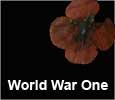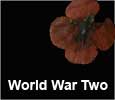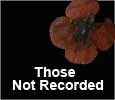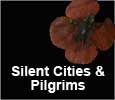Builder of Silent Cities
Colonel Herbert Thomas Goodland, C.B., D.S.O.
The Commonwealth War Graves Commission was established in 1917 as the Imperial War Graves Commission, to undertake the mammoth registration of grave locations, their maintenance and the creation of memorials to the war dead of the British Empire. A former Chilliwack businessman, Herbert Thomas Goodland became Deputy Controller of the Commission in 1919 and remained in that capacity until 1928. The British recognized Goodland's service with the Commission in 1928, when he was created a Companion of the Order of the Bath. The French government granted him additional honours respective of his post-war work presenting him with the Medaille de Reconnaissance and the Gold Medal of the Souvenir Francais.
Goodland was born in Taunton, Somerset, England, November 6, 1874 and immigrated to Manitoba at the age of 17. He took up farming until he came to British Columbia, residing in Chilliwack where he became the Manager of the Chilliwack Canning and Preserving Company in 1908, and held business interests with local real estate agent J. Howe Bent. As well, Goodland, a Free Mason, served as the Secretary of the Chilliwack Board of Trade and was in 1912 an Alderman for the City of Chilliwack. In 1910 he was instrumental in the formation of Chilliwack's "D" Company of the 104th Regiment and held a commission in the local unit until his retirement December 6, 1913 subsequently joining Alberta's 101st Regiment Edmonton Fusiliers. He was twice married, firstly to Ethel Haill Hawkins in 1900 who passed away in 1930, and then to Marjorie Kathleen Ryall with whom he had a daughter, Katherine.
On the commencement of hostilities in August 1914, Goodland was in England and immediately enlisted. As his two Canadian units were affiliated pre-war to the Royal Munster Fusiliers of the British Army he was assigned to that unit's 6th Battalion stationed at Curragh, Ireland. Goodland served as a staff officer with the 30th Infantry Brigade of the 10th (Irish) Division at Gallipoli, Salonica, Serbia and Macedonia where he participated in the heavy fighting on the Bulgarian front. Shortly afterwards Goodland contracted paratyphoid and in June 1916 was invalided home. Upon his recovery he was briefly attached to his original battalion until posted to the 16th (Irish) Division, commanding the 1st Battalion Royal Munster Fusiliers. With the 1st Munsters Goodland served in France during the operations of Messines Ridge in 1917. The 16th Division suffered greatly during the German "Michael" offensive of March 1918 and was withdrawn, returning to England to reform. The Division returned to France in August 1918. Goodland, however, remained in France and commanded the 5th Battalion Royal Berkshire Regiment of the 12th (Eastern) Division remaining with them until June 1919. Wartime honours granted to him included the Distinguished Service Order, the Serbian Order of the White Eagle and on three occasions Goodland was mentioned in despatches.
The work of the Commission respected that every fallen soldier should be permanently commemorated either by a headstone or memorial. These visible testaments of sacrifice were uniform in nature with no distinction made based upon "military or civil rank, race or creed." At all times it was important for the Commission to assist with the needs of parents, relatives and friends wishing to pay their respects to the departed. Many individuals travelled to the cemeteries, either on personal visits or as part of organized pilgrimages always charged with great emotion and memories.
Goodland's initial responsibilities, with the Commission, were the organization of 166 military cemeteries located in France and Belgium. The work involved the relocation of remains from battlefield cemeteries, the supervision of artisans, carpenters, stone masons, memorial designers and sculptors. At the time of his retirement, in 1928, Goodland's responsibilities rose to some 3,000 cemeteries indicative of the monumental loss of life during the First World War. At one time Goodland was in charge of more than 2000 employees though at the time of his retirement the employees numbered about 1200. This aspect of the job required careful administration to sort out not only the employee's requirements but for their wives and families. Accommodation, medical attention, education, annual leave, passports were just some of the necessities administered by Goodland and his office staff, made all the more efficient by Goodland's excellent administrative skills.
Apart from the relocation of isolated burials, there was always the discovery of remains requiring identification [if possible], registration and the poignant task of reburial. Not all personnel died at the front however, and many lost their lives at military hospitals, along the lines of communication on the Western Front and while moving from one theatre of operations to another. As a result, Goodland's responsibilities necessitated considerable travel within his area of jurisdiction in a car usually half-filled with wreaths.
Upon his retirement Goodland returned to British Columbia choosing to live in Victoria where he served at the legislature as the Deputy Sergeant-at-Arms, and became President of the Canadian Club and the United Services Institute. He was a member of Pro Patria Branch of the Canadian Legion and in 1936 attended the unveiling of the Vimy Memorial as part of the large pilgrimage to France by many Canadian First World War veterans. Goodland, as well, maintained his involvement with the Masons and as a Rotarian. He passed away in Saanich August 13, 1956 and is buried at the St. Luke's Anglican Church Cemetery, Victoria near Cedar Hill.
It was from Goodland's interest in Free Masonry that he became responsible for the institution of a Free Mason's Lodge comprised of employees from the War Graves Commission. Rudyard Kipling, the distinguished British novelist, who lost a son during the Great War was keenly interested in the work of the Commission and was invited to name the new lodge. Kipling suggested a title respectful of the Commission's work, "Builders of the Silent Cities". A dedication not only befitting of the Commission's dedicated efforts but further indicative of the many solemn grounds that today remain a permanent reminder of great loss during the First World War.




Chilliwack Museum and Archives 45820 Spadina Avenue, Chilliwack, BC, Canada V20 1T3 [604.795.5210]


